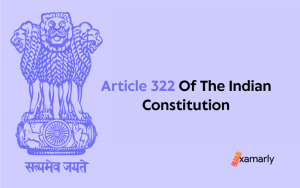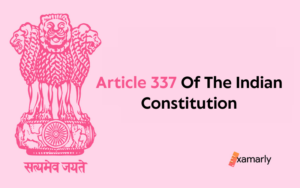Are you looking for the detailed analysis of Aram Shah, a significant historical figure? In medieval history, the first dynasty to rule Delhi was the Slave dynasty. In Northern India, Qutb-Ud-Din Aibak, a Turkic Mamluk slave general, established the Mamluk dynasty.
The Delhi Sultanate was controlled by five separate dynasties until 1526. However, the first one was the Mamluk dynasty, which lasted from 1206 until 1290.
Aram Shah was the second sultan of this powerful dynasty. This article focuses solely on his life, and the events that shaped Delhi’s history. Continue reading to learn about this king’s reign and deeply appreciate this remarkable figure. This will be helpful for your UPSC preparation.
From the challenges he faced as a ruler to his attempts to establish a stable administration, many fascinating aspects of his reign offer a unique insight into the Delhi Sultanate’s history.
In this article, we will take a closer look at the life and reign of Aram Shah and explore the key events and developments that marked his brief but impactful time as a ruler.
- Who Is Aram Shah?
- Reign
- Demise
- Important Points to Remember for UPSC
- Conclusion
- Frequently Asked Questions
- Who was Aram Shah?
- When did Aram Shah become the ruler of the Delhi Sultanate?
- How long did Aram Shah rule over the Delhi Sultanate?
- What were some of the challenges that Aram Shah faced during his reign?
- What was the result of Aram Shah's rule over the Delhi Sultanate?
- What happened to Aram Shah after his removal from power?
- What was the significance of Aram Shah's reign for the Delhi Sultanate?
- Who Established The Delhi Sultanate?
- Why Is The Mamluk Dynasty Called So?
Who Is Aram Shah?
Aram Shah, honoured as the Mamluk dynasty’s second sultan, was elected in 1210. The death of Qutb-Ud-Din Aibak tossed the Sultanate of Delhi amid a turbulent time, due to the issue of succession of the throne. Hence, Aram Bakhsh briefly occupied the throne.
Following this, Iltutmish of Badaun defeated him, as they fought for Delhi’s throne in 1211. He ruled Delhi’s Sultanate for a precise period of eight months only. The provincial governors benefited during the rugged reign of Aram Bakhsh and declared their independence.
His father (unclear) was Qutbuddin Aibak, whose death created chaos among his followers. It’s rather unclear how Aram Bakhsh is related to his predecessor Qutb Ud-Din Aibak.
The phrase “bin Aibak” (“son of Aibak”) appeared after his name in certain manuscripts’ chapter titles, leading other authors to conclude he was Aibak’s son. However, maybe the scribe added “bin Aibak” in error to the headline. In some context, Aibak had three daughters but no son.
Reign
- When Qutub-Ud-Din Aibak died, he vacated the throne without the announcement of the upcoming beneficiary. This untimely death created chaos among his men and established a critical moment. A group of Turkic nobles (amirs and maliks) from the land of Lahore decided to enthrone Aram Shah as Qutub-Ud-Din Aibak’s successor.
- Aram Baksh was the second ruler (1210-1211) who merely be on the throne for eight months under the title Aram Shah.
- However, he was a weak and incapable monarch. The regional governors began claiming independence under his brief eight-month tenure.
- Some of the Turkish nobles such as the Khalji nobles of Bengal didn’t agree with his ascension. Another group of military justiciar (Amir-i Dad) Ali-Yi Ismail nobles brought Iltutmish into the scenario to take over the throne.
- The nobility thought Iltumish the governor of Badaun and an erstwhile slave of Aibak, was a worthy contender for the throne because of his remarkable service history and the fact that Aibak had named him a son.
Similar Posts:
- Tughlaq Dynasty: Medieval Indian History UPSC Notes
- Khilji Dynasty: Medieval Indian History UPSC Notes
- Lodi Dynasty: Medieval Indian History Notes
Demise
Iltutmish was persuaded to sit on the throne by a group of nobles. The nobility considered Iltutmish a strong contender for the crown because he was a competent person with a remarkable service record.
After advancing towards Delhi to grab power, Iltutmish went on to defeat Aram Shah’s army in Bagh-i Jud. The Tabaqat-i Nasiri claims that he was “martyred”; however, it is unclear if this meant that he was executed while a prisoner of war or murdered on the battleground.
Aqsanqar and Farrukh Shah, two of his key officers, perished in the battle zone. Later, Iltutmish solidified his dominance.
Related Post: History Optional Syllabus For UPSC
Important Points to Remember for UPSC
- The Mamluk Dynasty of the Delhi Sultanate, also referred to as the Slave Dynasty, was headed by Aram Shah, who served as its third ruler.
- He succeeded his father, Shamsuddin Iltutmish, in 1235 AD.
- His reign was marked by political instability, as he faced a number of revolts and challenges to his authority from various nobles and governors.
- One of his most significant challenges came from his own mother, Shah Turkan, who sought to put her other son, Ruknuddin Firuz, on the throne instead.
- Aram Shah’s inability to effectively deal with these challenges to his authority and maintain law and order led to a decline in the power and prestige of the Delhi Sultanate.
- He was eventually overthrown and killed in a revolt led by his own slave, Balban, who would go on to become one of the most powerful rulers of the Delhi Sultanate.
- Despite his short and tumultuous reign, Aram Shah’s legacy is significant for the role he played in the broader history of the Delhi Sultanate and the Mamluk Dynasty.
- His reign also serves as an important example of the challenges and complexities of political rule in medieval India, particularly in the context of the early Islamic period.
Related: History Optional for UPSC
Conclusion
The Sultanate of Delhi became chaotic under Aram Shah’s eight-month rule, and the regional governors significantly increased their power and declared their independence. Iltutmish was therefore faced with several issues following his throne.
The legacy of Aram Shah continues to be a topic of debate among historians, as his reign was brief and largely unremarkable.
Nonetheless, his rise to power and the circumstances surrounding his overthrow shed light on the complex political dynamics of the Delhi Sultanate in the 13th century.
We have curated some important points on Aram Shah for UPSC aspirants to prepare. Read the blog carefully and prepare notes for your upcoming exam!
Frequently Asked Questions
Who was Aram Shah?
The Mamluk Dynasty of the Delhi Sultanate, also referred to as the Slave Dynasty, was headed by Aram Shah, who served as its third ruler.
When did Aram Shah become the ruler of the Delhi Sultanate?
Aram Shah became the ruler of the Delhi Sultanate in 1210 AD, after his father and predecessor, Iltutmish, died.
How long did Aram Shah rule over the Delhi Sultanate?
Aram Shah’s reign over the Delhi Sultanate was short-lived, lasting only a few months from May to November 1210 AD.
What were some of the challenges that Aram Shah faced during his reign?
Aram Shah faced several challenges during his brief reign, including the rebellions of several governors and the threat of invasion by the Khwarazmian Empire.
What was the result of Aram Shah’s rule over the Delhi Sultanate?
Aram Shah’s rule over the Delhi Sultanate was largely ineffective, and his brief reign contributed to the instability of the Sultanate during the early 13th century.
What happened to Aram Shah after his removal from power?
After being removed from power by his governor-general, Aram Shah was imprisoned and later killed, bringing an end to his brief reign over the Delhi Sultanate.
What was the significance of Aram Shah’s reign for the Delhi Sultanate?
While Aram Shah’s reign was brief and largely ineffective, it marked a significant point in the history of the Delhi Sultanate and the broader political landscape of the Indian subcontinent during the medieval period.
Who Established The Delhi Sultanate?
Under the Mamluk dynasty, Qutb-Ud-din Aibak established the Delhi Sultanate in 1206.
Why Is The Mamluk Dynasty Called So?
In Arabic, the word “Mamluk” denotes ownership. The Mamluk dynasty earned the nickname “slave dynasty” because its rulers were either former slaves or the offspring of former slaves.






